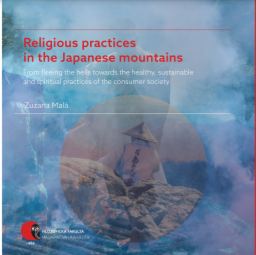Religious Practices in the Japanese Mountains: From Fleeing the Hells Towards the Healthy, Sustainable and Spiritual Practices of the Consumer Society
Religious Practices in the Japanese Mountains: From Fleeing the Hells Towards the Healthy, Sustainable and Spiritual Practices of the Consumer Society
Author(s): Zuzana Malá
Subject(s): Anthropology, Social Sciences, Museology & Heritage Studies, Customs / Folklore, Geography, Regional studies, Library and Information Science, Theology and Religion, Cultural Anthropology / Ethnology
Published by: Masarykova univerzita nakladatelství
Keywords: Japan; mountains; religious practices; afterlife; Tateyama Mandala; Tateyama cult; religious-cultural heritage; consumer society;
Summary/Abstract: The study examines the Japanese mountains as places of religious practices. The author looks at both the historical and the present-day religious practices enacted in the mountains and asks how the logic of the market has shaped them. By looking through the historical development of religious practices in the mountainous locality of Tateyama, the first three chapters offer an understanding of the relationship between mountains and notions of the afterlife. The case of Tateyama, a popular pilgrimage site during the Edo period, provides an insight into the pilgrimage place and its mountain cult taking into account the economic aspects in the maintenance of the cult. Drawing on insights gained through field research in the Japanese mountains of Tateyama and Dewa Sanzan, the author explores the present-day re-enactments and sustenance of religious practices and their intersection with the cultural heritage concept. These observations have provided a useful perspective on adjustments between providers of religious practices and participants. Although seen as marginal practices, austerities such as taki gyō and the complexity of qualities associated with them are introduced in the last chapter as examples of the creative sustenance of present-day ascetic practices.
- Print-ISBN-13: 978-80-210-9198-6
- Page Count: 172
- Publication Year: 2019
- Language: English
- Table of Content
- Introduction
- Sample-PDF
- eBook-PDF

